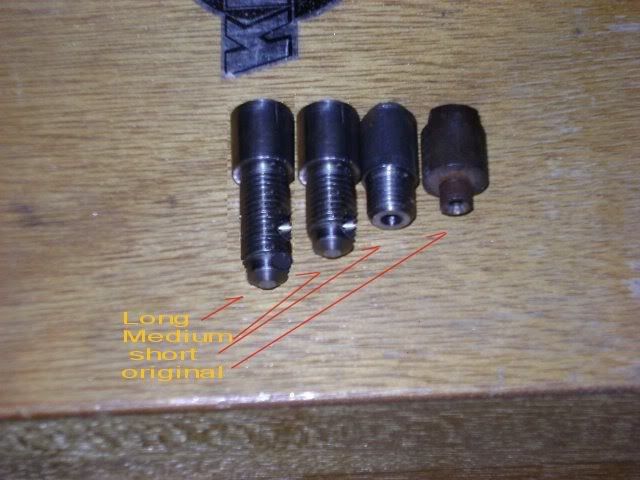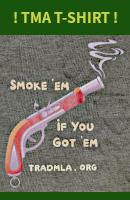Thanks for the help.
When you say short,medium, or long boister could you give me some specifics as to length.
I could take mine out and measure it but I still need a more specific reference.
no not really because they change in length depending on caliber
So here is what I have done . I have a medium , a small and an original .
I don’t have any longs because I cut those off , then drill and tap for a liner .
So to show you the long , I have done a quick photo shop ..

CVA at that time were having some issues
So now the original .
These are found on early CVA rifles . Early 1970s
These thread in front of the breech plug ,,OR,,, split the face of the plug .
So they went to the small bolster with a bigger neck . To top it off they leaghtened the breech plug and counter drilled it ,,“IE improved breech “
This was to give the bolster more to thread into
This however did not solve the issue
So they went to a medium . This plug had a faced end that mated to the off side of the chamber in the plug
This solved some of the issues . But they took it all another step and tried the long bolster . This has a longer threaded end that goes all the way through the plug and mates to the inside of the off side of the barrel
This however did not work any better then the medium . As such you mostly will find mediums on the newer CVA rifles
So why the need . Well as I said CVA was having issues with bolsters coming out and loosening up . Im sure we all have seen bolsters on CVA rifles and pistols that look like someone has taken a pipe wrench to them ,,,, right …….
The problem wasn’t the bolster design . As you can see the first two bolster look just like what you would find on any semi or custom rifle , that employs a drum type bolster .
Mind you a design that’s been around for as long as percussion guns .
The problem lies in the way the bolster was set .
See part of the manufacturing process that Jukar was using and still uses , is that they use friction tools to set the bolsters and hydraulic applications to set the breech ..
If you notice the bolster has no flats on them like a bolster you would buy from a supply house .
well the original does . but i filed those , long ago
So once the bolsters were place , they were not as tight as they should be .
The bolster is then indexed , drilled an tapped for the nipple .
Then set aside to go on to assembly.
But because the bolster wasn’t tight . As soon as the rifle was subject to regular firing , it would work itself lose . People would then try to tighten it up . But they couldn’t because as soon as they tightened it to wher it should be , the nipple would no longer align.
If left miss aligned . The hammer would eventually loosen the bolster back up .
To top that all off , fouling would get into the threads , eventually corroding them to the point that the bolster would blow out
Hence the evolution of the longer necks .
Basically if the need was to ignite pellets in the center , which is a better way to ignite all powder , not just pellets “ hence the true thought behind the improved breech designs “
There would be no need for the longer neck bolster . A short bolster would do the very same thing when threaded into an improved breech




